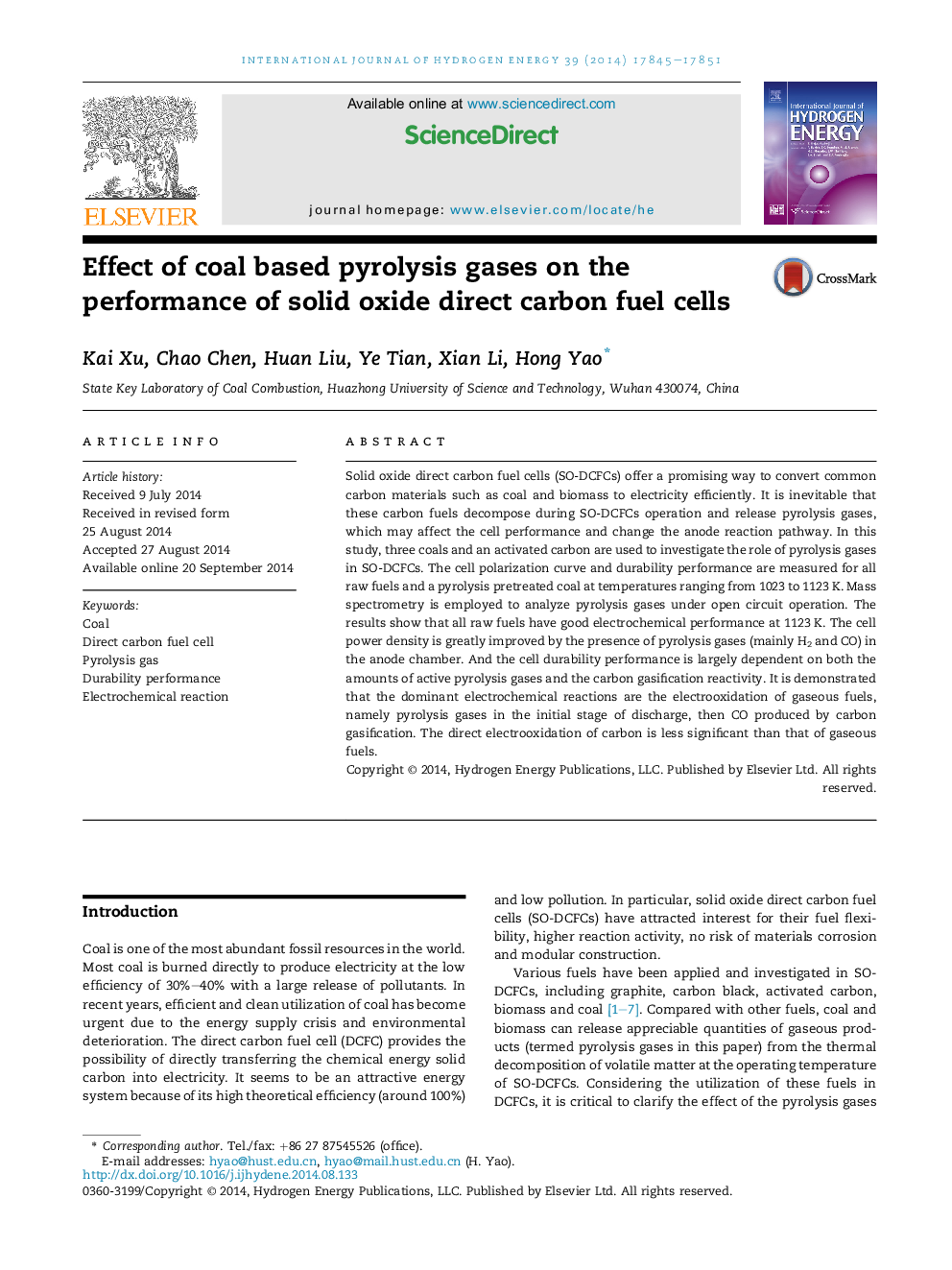| Article ID | Journal | Published Year | Pages | File Type |
|---|---|---|---|---|
| 1271880 | International Journal of Hydrogen Energy | 2014 | 7 Pages |
•Three coals were demonstrated to be feasible for use in SO-DCFCs.•A power density of 199 mW cm−2 was achieved with lignite as fuel at 1123 K.•The lignite-fueled cell gave the longest duration of 9.25 h at 1073 K.•The gaseous fuels were the main electrochemical reactants in SO-DCFCs.•The direct electrooxidation of carbon was insignificant for the cell performance.
Solid oxide direct carbon fuel cells (SO-DCFCs) offer a promising way to convert common carbon materials such as coal and biomass to electricity efficiently. It is inevitable that these carbon fuels decompose during SO-DCFCs operation and release pyrolysis gases, which may affect the cell performance and change the anode reaction pathway. In this study, three coals and an activated carbon are used to investigate the role of pyrolysis gases in SO-DCFCs. The cell polarization curve and durability performance are measured for all raw fuels and a pyrolysis pretreated coal at temperatures ranging from 1023 to 1123 K. Mass spectrometry is employed to analyze pyrolysis gases under open circuit operation. The results show that all raw fuels have good electrochemical performance at 1123 K. The cell power density is greatly improved by the presence of pyrolysis gases (mainly H2 and CO) in the anode chamber. And the cell durability performance is largely dependent on both the amounts of active pyrolysis gases and the carbon gasification reactivity. It is demonstrated that the dominant electrochemical reactions are the electrooxidation of gaseous fuels, namely pyrolysis gases in the initial stage of discharge, then CO produced by carbon gasification. The direct electrooxidation of carbon is less significant than that of gaseous fuels.
